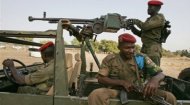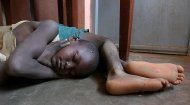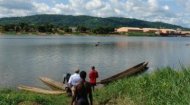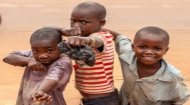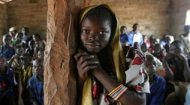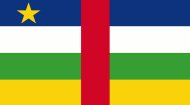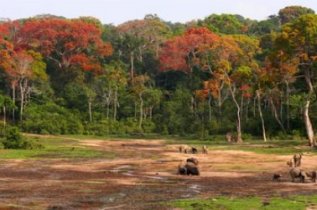|
This incessant political instability has prevented the establishment of strong state institutions, undermined the rule of law, and fostered an environment where armed groups could proliferate. The most recent major crisis erupted in 2013, when a coalition of rebel groups, predominantly Muslim, known as the Séléka, overthrew President Bozizé, leading to reprisal attacks by anti-Balaka militias, largely Christian or animist. This conflict, marked by extreme violence and sectarian divisions, plunged the country into its deepest crisis, displacing millions and severely damaging its already fragile social fabric. In December 2015 a new constitution approved in referendum and in February 2016 Faustin-Archange Touadéra won the presidential election in the run-off, however conflict continued until a fragile a peace agreement was signed in Khartoum in 2019. President Faustin-Archange Touadéra was re-elected in 2020 (albeit under contested circumstances). The political landscape of the CAR is an intricate web of official governance, powerful armed factions, and significant international intervention. The current government, led by President Touadéra, struggles to exert authority beyond the capital, Bangui, and a few major towns. Large swathes of the country remain under the control of various armed groups, despite the 2019 peace agreement that theoretically integrated some of these groups into the national framework. These groups often exploit the country's mineral wealth, operate illegal checkpoints, and engage in illicit trade, further weakening state legitimacy and capacity. The United Nations Multidimensional Integrated Stabilization Mission in the Central African Republic (MINUSCA), one of the largest UN peacekeeping missions globally, plays a crucial role in protecting civilians, supporting the peace process, and assisting in security sector reform. However, its presence alone cannot guarantee stability. The CAR's political challenges are compounded by pervasive corruption, weak judicial systems, and a lack of accountability, which perpetuate cycles of impunity and mistrust. Furthermore, increasing geopolitical competition, with nations like Russia and France vying for influence, adds another layer of complexity to the internal dynamics, sometimes prioritising strategic interests over genuine peacebuilding and democratic consolidation. The fundamental challenge remains building inclusive governance structures that can genuinely represent and serve all Central Africans, fostering a sense of shared citizenship over sectarian or regional loyalties, and laying the groundwork for true political stability. |
CAR Profile |
CAR Profile |
CAR Profile | CAR Profile |
About street children in CAR in facts, figures and video with details of support projects and programs.
More >
About the lives and challenges the children of Africa face in a series of articles and videos.
More >

|
The Central African Republic economic profile presents a stark paradox: it is immensely rich in natural resources, including diamonds, gold, uranium, timber, and fertile agricultural land, yet it consistently ranks among the world's poorest countries with over 80% of the population living in multidimensional poverty with a life expectancy of just 55 years (2025). This phenomenon, often referred to as the "resource curse," means that instead of driving development, these resources have frequently fueled conflict, with armed groups vying for control over lucrative mining and logging concessions. The economic activity is largely informal, unregulated, and provides limited benefits to the state or its citizens. The Central African Republic is in 191st place out of 193 countries and territories in 2025 when ranked in terms of life expectancy, literacy, access to knowledge and the living standards of a country. The formal economy is severely underdeveloped. A lack of basic infrastructure – paved roads, reliable electricity, and telecommunications – hinders trade and investment. Agriculture, predominantly subsistence farming, employs the majority of the population but remains vulnerable to climate shocks and insecurity, leading to chronic food insecurity. Industrialisation is virtually nonexistent, and the country relies heavily on imports and foreign aid. Unemployment, particularly among the youth, is rampant, pushing many into illicit activities or recruitment by armed groups. The conflict has devastated the economic infrastructure that did exist, disrupting supply chains, displacing farmers, and deterring both domestic and foreign investment. Restoring economic stability requires not only peace and security but also transparent governance of natural resources, investment in infrastructure, diversification of the economy beyond raw materials, and support for small and medium-sized enterprises. Without opportunities for legitimate livelihoods, especially for ex-combatants, the risk of renewed violence remains high. The protracted crises have profoundly impacted the social profile of the Central African Republic, leading to a humanitarian emergency of staggering proportions. Millions of Central Africans have been displaced both internally and as refugees in neighbouring countries, making it one of the largest displacement crises globally. These displaced populations often live in dire conditions, with limited access to food, clean water, shelter, and medical care. Access to essential services like healthcare and education is severely limited, particularly outside Bangui. Many schools and health centres have been destroyed or are non-functional due to insecurity. Child mortality rates are high, and preventable diseases claim many lives. The conflict has also exacerbated human rights abuses, including sexual and gender-based violence, recruitment of child soldiers, and arbitrary killings, leaving deep trauma within communities. Despite the challenges, the resilience of the Central African people is remarkable. Local communities, religious leaders, and civil society organisations often step in where the state is absent, providing essential services, mediating local conflicts, and working towards reconciliation. However, the scale of needs is immense, requiring continuous international humanitarian assistance. Rebuilding social cohesion, trust between communities, and addressing the root causes of division are critical steps on the path to long-term peace and stability. For the average Central African, daily life is a constant negotiation with uncertainty and hardship. For those living in areas controlled by armed groups, the pervasive fear of violence, extortion, and human rights abuses dictates every decision. Access to food, clean water, and basic medical care is a daily struggle. Children often cannot attend school regularly, if at all, depriving them of the foundation for a better future. The absence of reliable infrastructure means long and arduous journeys, even for short distances, and a lack of communication with family members. Even in relatively safer areas like Bangui, the effects of the crisis are palpable. High unemployment, soaring prices, and unreliable public services are the norm. Electricity is intermittent, and many rely on generators or go without. Public transport is rudimentary. Yet, amidst these immense difficulties, there is also vibrant resilience. Markets bustle, people find innovative ways to earn a living, and community bonds remain strong. Family and faith often provide solace and strength in the face of adversity. The yearning for normalcy, for a secure environment where children can play and adults can work without fear, is a deeply held aspiration that drives the search for lasting stability. For more information about the Central African Republic check out our profile pages above. |

